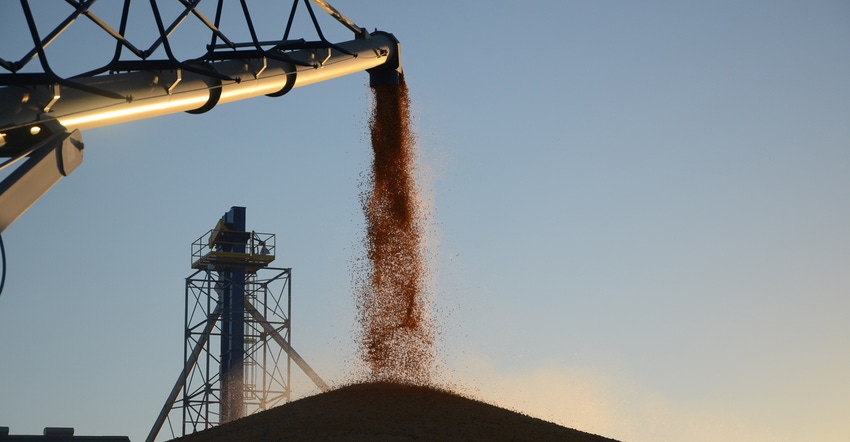February 8, 2019

When developing a grain marketing plan, it's easy to get overwhelmed by the numerous combinations of price targets, possible sale dates and contracts available.
This article will evaluate marketing outcomes from a date-driven marketing plan using historical prices — including various date-driven postharvest marketing strategies for corn using historical cash prices from Columbus, Neb.
The data was collected weekly on Thursdays from the USDA Marketing Service and is available from October 1997 to present.
To create a date-driven plan, divide your unpriced grain into smaller units and select a specific day each month to sell to the local elevator at that day’s cash price. The question is: Will this date-driven plan improve the average price you receive per bushel when postharvest marketing corn?
Five date-driven postharvest corn marketing strategies are summarized in Table 1. Each of the strategies in Table 1 begin in October with sales over two, four, six, eight or 10 months. These strategies are compared with the harvest price by average price obtained over the 20-year period and the probability of the average price of a strategy being higher than the cash price at harvest.

The cost of storage was not included in this analysis as storage costs vary greatly among farms, depending on the size, age and condition of the bin and the individual farmer’s operating note interest expense.
The "harvest price" column shows outcomes of selling 100% of corn across the scale the first Thursday of October for each year. The remaining strategies in Table 1 divided unpriced bushels into equal amounts and sold them the first Thursday of each month listed in the heading.
For example, in the two-month strategy (OCT-NOV) 50% of bushels were sold the first Thursday in October, and the remaining 50% of the bushels were sold on the first Thursday in November. All of these strategies resulted in a higher average price over 20 years than if all of the bushels had been sold at harvest each year. Furthermore, all the date-driven marketing strategies had a 55% or higher probability of occurring. This indicates date-driven postharvest marketing strategies may improve corn revenue.
Additional strategies
Additional strategies were evaluated, and those strategies that had a probability of beating the harvest price greater than or equal to 60%, or a 20-year average price greater than $3.50 per bushel, are shown in Table 2. Average prices and probability of beating the harvest price are increased when the sales took place in the spring. The strategies with the highest probability of beating the harvest price are March-April (two-month), March-August (six-month), and January-August (eight-month). Three strategies, May-June, June-July and April-June, had a 20-year average price greater than or equal to $3.50 per bushel.

It's important to note that the harvest price was the highest three out of 20 years (1997-98, 2002-03, 2012-13).
If an individual estimated their storage cost per bushel per month for each marketing year and included it in the analysis, it would show a lower average return for marketing plans where corn was stored for several months, maybe even eliminating the gain in revenue over the harvest price.
This analysis shows a date-driven postharvest marketing strategy may improve the average price you receive for corn, if the strategy is executed in the spring. Farmers must be aware of the cost of storage, as it will reduce or eliminate the gains in price they receive by storing corn to market later in the year.
A farmer must assess their personal risk and determine what combination of price targets, possible sale dates and marketing contracts work best for their operation. Past performance is not necessarily indicative of future results. Grain marketing involves risk, and you should fully understand those risks before pricing grain.
Groskopf is a Nebraska Extension educator for agricultural economics.
This report comes from UNL CropWatch, which is solely responsible for the information provided and is wholly owned by the source. Informa Business Media and all its subsidiaries are not responsible for any of the content contained in this information asset.
About the Author(s)
You May Also Like




